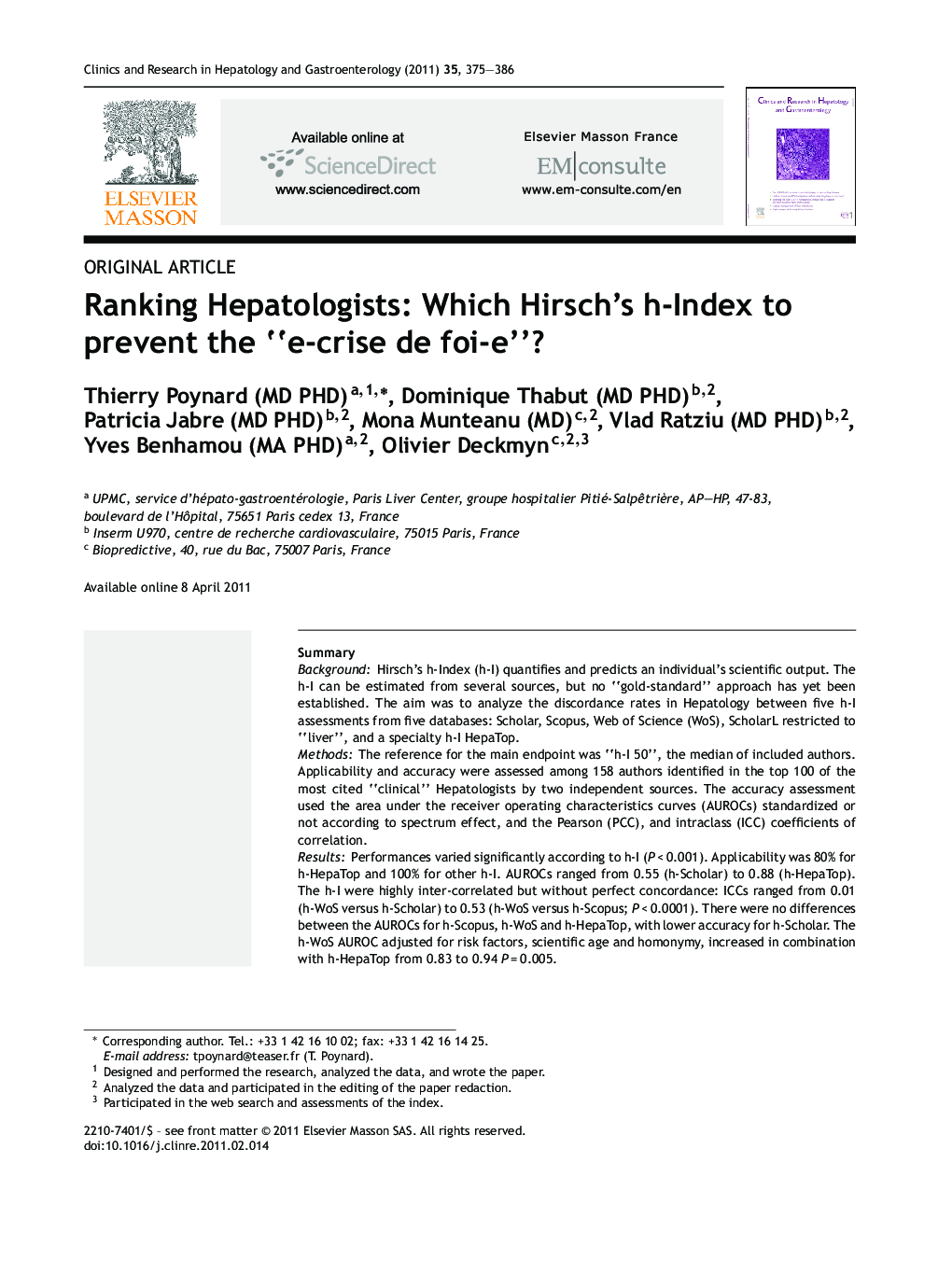| Article ID | Journal | Published Year | Pages | File Type |
|---|---|---|---|---|
| 3286549 | Clinics and Research in Hepatology and Gastroenterology | 2011 | 12 Pages |
SummaryBackgroundHirsch's h-Index (h-I) quantifies and predicts an individual's scientific output. The h-I can be estimated from several sources, but no “gold-standard” approach has yet been established. The aim was to analyze the discordance rates in Hepatology between five h-I assessments from five databases: Scholar, Scopus, Web of Science (WoS), ScholarL restricted to “liver”, and a specialty h-I HepaTop.MethodsThe reference for the main endpoint was “h-I 50”, the median of included authors. Applicability and accuracy were assessed among 158 authors identified in the top 100 of the most cited “clinical” Hepatologists by two independent sources. The accuracy assessment used the area under the receiver operating characteristics curves (AUROCs) standardized or not according to spectrum effect, and the Pearson (PCC), and intraclass (ICC) coefficients of correlation.ResultsPerformances varied significantly according to h-I (P < 0.001). Applicability was 80% for h-HepaTop and 100% for other h-I. AUROCs ranged from 0.55 (h-Scholar) to 0.88 (h-HepaTop). The h-I were highly inter-correlated but without perfect concordance: ICCs ranged from 0.01 (h-WoS versus h-Scholar) to 0.53 (h-WoS versus h-Scopus; P < 0.0001). There were no differences between the AUROCs for h-Scopus, h-WoS and h-HepaTop, with lower accuracy for h-Scholar. The h-WoS AUROC adjusted for risk factors, scientific age and homonymy, increased in combination with h-HepaTop from 0.83 to 0.94 P = 0.005.ConclusionsThe h-I should be carefully checked before any hepatologist's evaluation. Three factors were associated with applicability and accuracy: the data source, the risk of homonyms, and scientific age. A unique “global” identification number is warranted.
